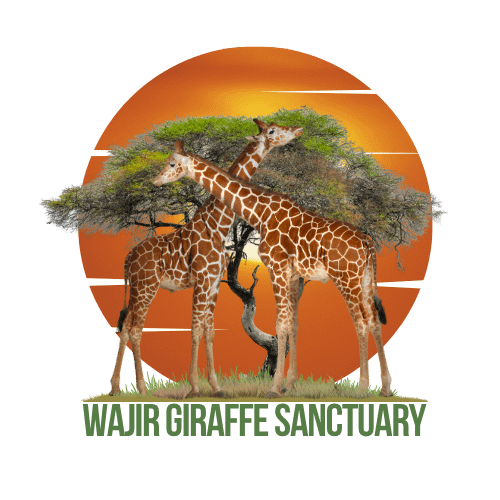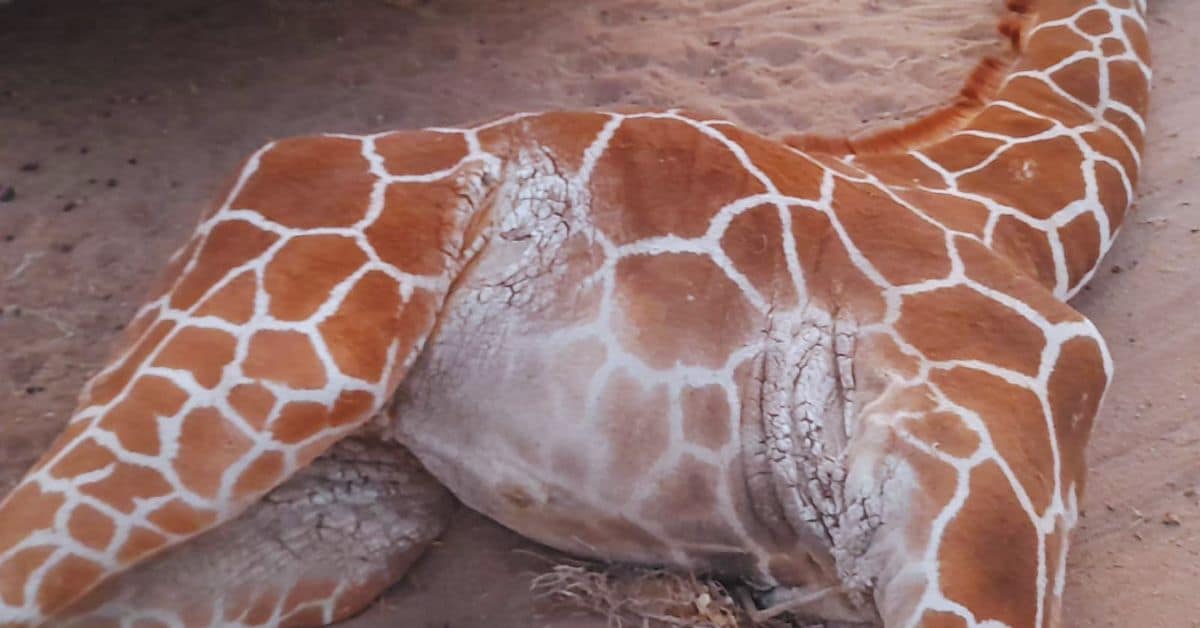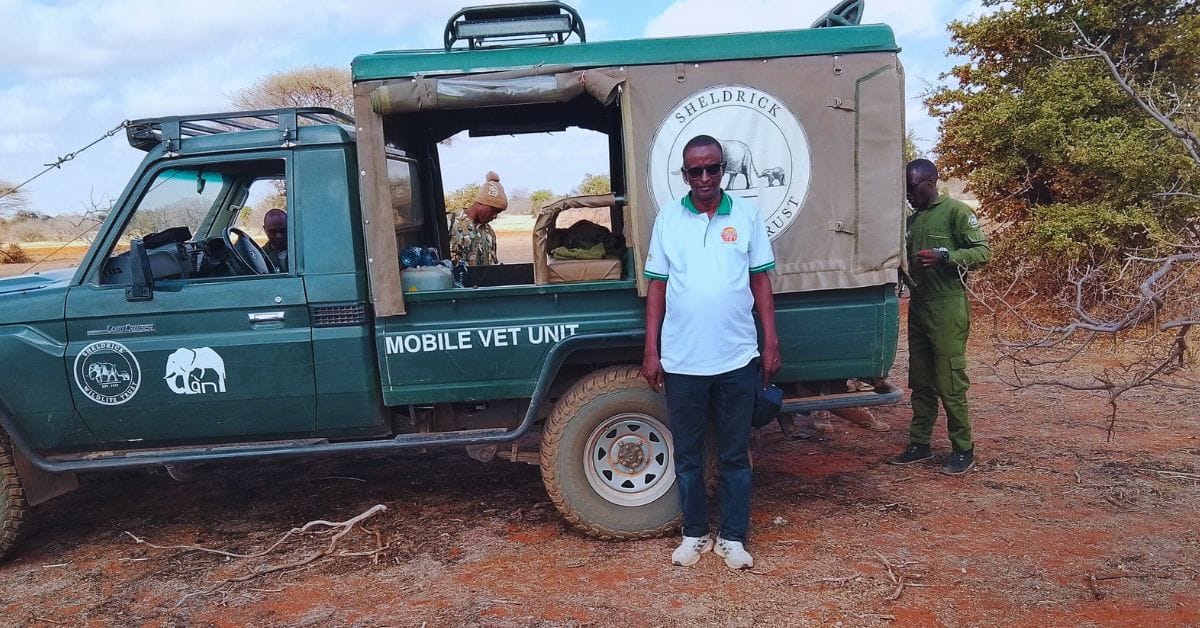Wajir Giraffe Sanctuary

In the remote, arid landscapes of Northern Kenya, just 12 kilometers south of Wajir Town along the Mandera-Wajir-Isiolo Road, lies the Wajir Giraffe Sanctuary—a groundbreaking community-led initiative dedicated to the protection of the endangered reticulated giraffe, also known as the Somali giraffe. Established in 2020, the Wajir Giraffe Sanctuary is the first of its kind in Wajir County, providing a much-needed safe haven for giraffes in a region where conservation efforts have historically been limited. This sanctuary was born out of a grassroots movement by local communities determined to take action against the rapid decline of giraffe populations due to poaching, habitat loss, and human-wildlife conflict.
The sanctuary operates within communally-owned land and relies on the strength of local partnerships, traditional knowledge, and community participation to protect wildlife. In an area where nomadic pastoralism is the primary livelihood and where giraffes have long been under threat, this sanctuary represents hope—not just for the giraffes, but for the people who share the land with them. By combining education, ecological restoration, and sustainable development, the Wajir Giraffe Sanctuary is playing a critical role in rewriting the story of giraffe conservation in Kenya.
The Urgency of Giraffe Conservation in Northern Kenya
Giraffe populations across Africa have experienced a dramatic decline—largely due to poaching, habitat loss, and human-wildlife conflict. The reticulated giraffe, with its distinctive net-like patterns, is native to North Eastern Kenya and parts of southern Ethiopia and Somalia. Wajir County, with its semi-arid landscapes, vast plains, seasonal rivers, and rocky outcrops, offers an ideal yet increasingly threatened habitat for this species.
The primary threats facing giraffes in the region include:
- Poaching for meat, often driven by poverty and lack of alternative livelihoods.
- Encroachment and habitat fragmentation due to unsustainable grazing and human settlements.
- Climate change and prolonged droughts, which reduce water and forage availability.
- Lack of awareness and education on wildlife conservation.
The Wajir Giraffe Sanctuary directly addresses these issues by combining scientific monitoring, habitat restoration, and community development initiatives.
Mission, Vision & Core Values
Mission
To conserve and protect the endangered reticulated giraffe and its habitat in Wajir County through community-led efforts, education, research, and sustainable development that benefits both people and wildlife.
Vision
A secure and thriving natural habitat in Wajir County, where reticulated giraffes and other wildlife coexist harmoniously with empowered and environmentally conscious communities.
Core Values
- Community Empowerment
- Respect for Nature
- Integrity and Transparency
- Sustainability
- Education and Awareness
- Collaboration and Partnerships
- Innovation and Learning
Conservation Programs at Wajir Giraffe Sanctuary
1. Giraffe Monitoring and Research
The sanctuary conducts regular surveys to track giraffe populations. Using community rangers and mobile data sheets, the team monitors giraffe sightings, behavior, health, and movements. This data is vital in understanding population dynamics and planning conservation strategies.
2. Habitat Restoration and Protection
Efforts are made to restore and protect key giraffe habitats. This includes:
- Planting native trees such as Acacia and Commiphora.
- Creating wildlife corridors to support giraffe movements.
- Preventing overgrazing through seasonal grazing plans and educating pastoralists.
3. Community Education and Awareness
Public meetings (barazas), school programs, and local radio campaigns help raise awareness about the value of wildlife. Special events like World Giraffe Day (June 21st) are celebrated to foster a conservation culture, especially among youth and women.
4. Human-Wildlife Coexistence
The sanctuary promotes non-lethal conflict resolution by:
- Educating herders on coexistence strategies.
- Advocating rotational grazing patterns to reduce habitat overlap.
- Offering training on conflict mitigation techniques.
5. Anti-Poaching and Wildlife Crime Prevention
In collaboration with Kenya Wildlife Services (KWS) and local elders, the sanctuary:
- Runs community patrols and reporting systems.
- Offers alternative livelihoods such as beekeeping, craft making, and eco-tourism.
- Conducts awareness workshops on wildlife laws and penalties.
6. Water and Climate Resilience
Wajir County is prone to droughts, which severely affect both wildlife and communities. The sanctuary:
- Builds and rehabilitates water points for giraffes and livestock.
- Trains locals on climate-smart grazing.
- Monitors climate impacts on giraffe behavior and health.
7. Eco-Tourism and Income Generation
The sanctuary is developing eco-tourism experiences that showcase both giraffes and the rich culture of Wajir. Activities include:
- Guided giraffe walks
- Cultural homestays
- Local crafts and cuisine
Trained local guides, particularly youth and women, lead these experiences, ensuring the benefits flow back into the community.
8. Conservation Partnerships and Training
By working with national and international organizations, the sanctuary strengthens its impact. It hosts:
- Training workshops on data collection, giraffe ecology, and conservation tools.
- Internships and volunteer programs for students and researchers.
Exploring Wajir County: Beyond the Sanctuary
Visitors to the Wajir Giraffe Sanctuary can explore a range of unique destinations nearby, including:
- Wajir Museum
- Orahey Wells and Bunkers
- Sabuli Wildlife Conservancy
- Wagalla Massacre Site
- Lorian Swamp
- Shaletey Caves
These locations offer insights into the county’s cultural heritage, history, and natural beauty.
Why Wajir Giraffe Sanctuary is a Model for Community-Led Conservation
What sets the Wajir Giraffe Sanctuary apart is its bottom-up approach. Rather than imposing top-down policies, the sanctuary is deeply embedded within the local community. It recognizes that conservation success depends on the people who live closest to the land.
Through a blend of science, traditional knowledge, and collaborative governance, the sanctuary is transforming Wajir County into a hub for giraffe conservation in Kenya.
How You Can Support Wajir Giraffe Sanctuary
There are many ways to get involved:
- Donate or sponsor conservation projects.
- Volunteer or apply for internships.
- Visit the sanctuary and participate in eco-tourism activities.
- Share our story and spread awareness on social media.
Conclusion
The Wajir Giraffe Sanctuary stands as a shining example of how grassroots conservation can address global biodiversity challenges. By focusing on education, empowerment, and ecosystem restoration, the sanctuary is making a tangible difference for reticulated giraffes and the people of Wajir County.
As climate change and habitat degradation continue to threaten wildlife in East Africa, models like the Wajir Giraffe Sanctuary will be essential to preserving our planet’s most iconic species—starting with the gentle giants of Northern Kenya.




[…] in the arid lands of Northern Kenya, Wajir Giraffe Sanctuary serves as a safe haven for giraffes and other wildlife threatened by habitat loss. The […]